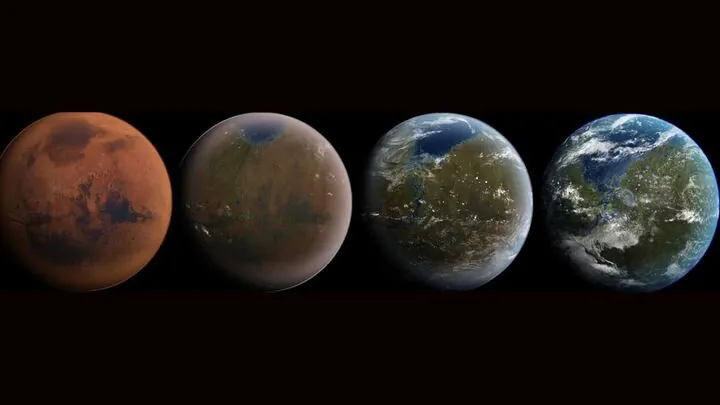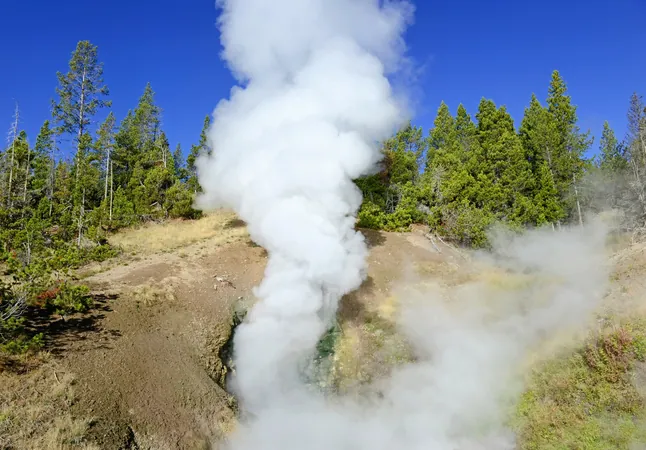
Is Green Mars Just Around the Corner? Scientists Push for Terraforming
2025-06-02
Author: Benjamin
From Fiction to Foresight
For decades, the dream of terraforming Mars—turning its barren landscape into a thriving habitat—was confined to the pages of science fiction. However, a groundbreaking new study suggests that we might be closer to making this dream a reality.
Erika DeBenedictis, CEO of Pioneer Labs and the study's lead author, emphasizes a shift in our capabilities: "Thirty years ago, terraforming Mars was an impossible dream. Now, advancements in technology—like SpaceX's Starship and breakthroughs in synthetic biology—have opened viable pathways to transformation."
Why Bother with Mars?
Several experts argue that turning Mars green offers more than just a scientific challenge; it's a moral imperative. Edwin Kite, an associate professor at the University of Chicago, encapsulates this notion: "Living planets are better than dead ones. Given that Mars was once habitable, greening it could become humanity's ultimate restoration project."
Although the full transformation could span centuries, the long-term goal envisions Mars blossoming with stable bodies of liquid water and a breathable atmosphere, possibly paving the way for human settlements.
The Broader Responsibility of Life
Robin Wordsworth, an environmental sciences professor at Harvard, broadens the conversation: tearing down the barriers between species and their habitats is crucial. He notes, "Life is precious, and since Earth is the only known cradle of life, it’s our duty to consider how we could propagate life on other worlds."
Learning from Mars to Help Earth
Interestingly, efforts to terraform Mars could also provide solutions to our ongoing earthly climate and sustainability challenges. Nina Lanza, a planetary scientist, argues that Mars can serve as a testbed for environmental engineering. "If we can figure out how to modify Mars effectively, we can learn valuable lessons for preserving our own planet," she posits.
Should We Transform Mars?
However, not all scientists are onboard with the idea of terraforming. Echoing a familiar caution from "Jurassic Park," they remind us that we should first grapple with the ethical implications of such radical changes. Lanza warns, "If we proceed with terraforming, we risk altering Mars irreversibly, potentially losing our chance to learn from its original state and any traces of life that may exist."
The Path to Terraforming Mars
Transforming Mars isn’t a simple overhauling; it involves massive geological and atmospheric changes to support oxygen and water. The authors of the study propose three development phases:
1. **Warming Mars**: Implement climate engineering techniques, like reflective solar sails or dispersing nanoparticles, to increase the surface temperature by at least 30°C (86°F) and encourage the release of carbon dioxide.
2. **Introducing Extremophiles**: Deploy engineered microbes that can thrive in Martian conditions, which would begin oxygen production and reshape the chemical environment.
3. **Building a Complex Ecosystem**: Over a long period, create a robust biosphere capable of supporting diverse plant life and potentially enabling human inhabitants.









 Brasil (PT)
Brasil (PT)
 Canada (EN)
Canada (EN)
 Chile (ES)
Chile (ES)
 Česko (CS)
Česko (CS)
 대한민국 (KO)
대한민국 (KO)
 España (ES)
España (ES)
 France (FR)
France (FR)
 Hong Kong (EN)
Hong Kong (EN)
 Italia (IT)
Italia (IT)
 日本 (JA)
日本 (JA)
 Magyarország (HU)
Magyarország (HU)
 Norge (NO)
Norge (NO)
 Polska (PL)
Polska (PL)
 Schweiz (DE)
Schweiz (DE)
 Singapore (EN)
Singapore (EN)
 Sverige (SV)
Sverige (SV)
 Suomi (FI)
Suomi (FI)
 Türkiye (TR)
Türkiye (TR)
 الإمارات العربية المتحدة (AR)
الإمارات العربية المتحدة (AR)